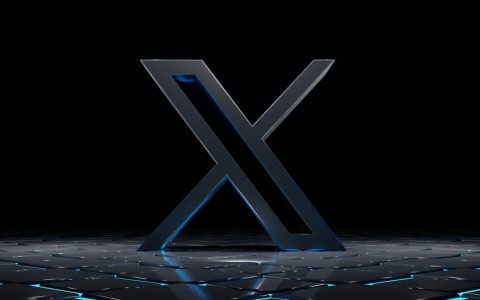Bankman-Fried misguides regulators by directing them away from centralized finance

FTX Exchange CEO Sam Bankman-Fried proposed a blueprint for regulators to look into decentralized finance — with nary a word about centralized exchanges like his own.
Last month’s proposal from Sam Bankman-Fried, CEO of crypto exchange FTX, for regulators to establish a litany of standards for the cryptocurrency industry poses an existential threat to decentralized finance (DeFi) platforms and entrepreneurial spirit. As one of a select few with the capital and clout to move the needle in the discussion surrounding crypto regulation, Bankman-Fried, also known as SBF, should be taking a stand to protect DeFi by directing regulators to where they’re urgently needed: centralized finance (CeFi) platforms and centralized exchanges (CEXs).
In a section of his blueprint for regulatory oversight and industry standards addressing DeFi, SBF affirms the importance of maintaining permissionless smart contracts and validators. He goes on to propose that DeFi front-end providers, website hosts and even related marketers be required to register as traditional financial brokerages.
The implication of such a classification would subject DeFi agents to a host of stringent regulatory policies and Know Your Customer procedures. Even hiring the highly specialized professionals necessary to manage relevant legal responsibilities requires enormous capital and resources.
Related: Facebook is on a quest to destroy the Metaverse and Web3
DeFi is intrinsically self-regulated. Any regulatory action would be redundant at best, and suffocating at worst. Nevertheless, anything resembling broker-dealer regulation would effectively crush DeFi’s entrepreneurial spirit and ultimately transfer DeFi Legos into the hands of a small group of centralized crypto powerhouses — namely, Binance and SBF’s FTX exchange.
Perhaps ironically, it is those very centralized platforms and their opaque operations that require regulation the most.
The Great Financial Crisis: A regulator’s dream come true
It would be infantile to suggest that regulation does not serve a purpose. Here’s what regulation does very well: It ensures that big players follow all relevant laws and injects transparency into the operations of otherwise opaque financial institutions. In short, regulation breaks down information asymmetry and prevents the big guys from colluding (and lying) to exploit the little guys, who can rarely see enough of the picture to make informed decisions.
The 2008 financial crisis showed citizens the world over that their economic well-being, livelihoods and life savings had been entrusted to massive financial institutions operating without restraint. In the aftermath of the crisis, regulators introduced extensive reporting and risk management requirements to prevent a relapse.
Whether financial industry representatives will tell you it worked out for the best in 2022 is another story. But the crisis did well to demonstrate the fundamental approach of top-down regulation: to leverage the power of government to keep large, opaque institutions in line and ensure customer funds and corresponding reserves are managed responsibly and with transparency.
Decentralized systems: A regulator’s worst nightmare
Alongside extensive regulation, the 2008 financial crisis produced an additional alternative: the Bitcoin (BTC) white paper. Citing irresponsible credit expansion and unilateral trust as primary inspirations, the anonymous author, Satoshi Nakamoto, presented to the world a trustless, immutable monetary system. In other words, they designed a system that regulates itself.
In the transparency department, there exists no greater form of proof than that which is cryptographically generated by block producers. A cryptographic proof is, for all intents and purposes, a form of regulation hardcoded into software and maintained by a decentralized body of nodes.
Fully transparent and operating in adherence to a series of immutable rules, decentralized systems are a regulator’s dream come true — or at least, they would be if they didn’t render regulators obsolete.
By supplementing a robust consensus and decentralized node body with an Ethereum Virtual Machine and smart contract modules, DeFi is merely the next iteration of decentralized money. While it does require some element of governance, top-down regulation is simply not necessary.
Decentralized autonomous organizations have already established themselves as DeFi’s self-selected mechanisms for reserve management policies, interest rates and other key parameters. After all, who better to determine the risk appetite and reserve composition for a DeFi protocol than its own user base? Talk about skin in the game.
DeFi is where regulation is not needed. Want to know a lending pool’s total value locked? Check the blockchain. Looking for its reserve composition? Check the blockchain. Want to know an insurance protocol’s payout policies? Check the open-source code repository. Permissionless smart contracts and validators embody and encompass bottom-up regulation. Bankman-Fried supports both.
The regulation crypto urgently needs
Over the last five years, crypto has experienced several iterations of exponential growth — for better and worse. Between multibillion-dollar CeFi platforms and CEXs, the space has more opaque centralized power players today than ever before.
Already, the bankruptcies of CeFi giants BlockFi, Celsius Network and Voyager have left retail customers depleted and dejected. CEX hacks have also pushed customers to reconsider their trust in crypto at large.
On this accord, Bankman-Fried has certainly not lost the plot. Following his dissertation on DeFi, he advocates for audits and regulation for U.S. dollar-pegged stablecoins with bank reserves. Here, he’s on the mark.
Related: Nodes are going to dethrone tech giants — from Apple to Google
Tether and its industry-leading USDT (USDT) stablecoin rely heavily on the core banking system to manage reserves. On this prerogative, SBF and his Washington-based network may have an avenue to soothe a major industry pain point. Tether plays a cardinal role as a liquidity provider in a nascent space, but its lack of transparency and proper audits have aroused suspicions of foul play from retail traders and institutions looking in.
Should SBF clean up his position on DeFi and shift regulatory attention to the CeFi platforms and CEXs that urgently need oversight, the crypto industry at large may advance to a golden era — one where centralized organizations and decentralized ecosystems coexist in peace. One where trusted intermediaries and trustless protocols together serve a community of entrepreneurs, investors and enthusiasts at the bleeding edge.
This article is for general information purposes and is not intended to be and should not be taken as legal or investment advice. The views, thoughts, and opinions expressed here are the author’s alone and do not necessarily reflect or represent the views and opinions of Cointelegraph.









